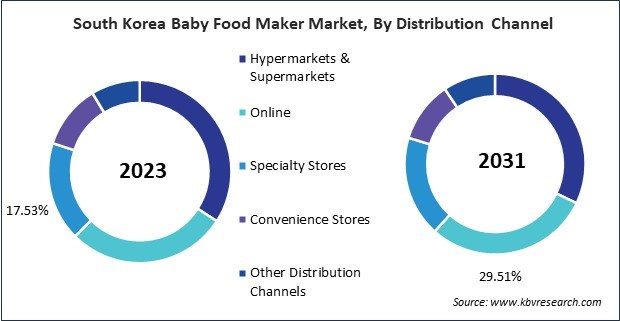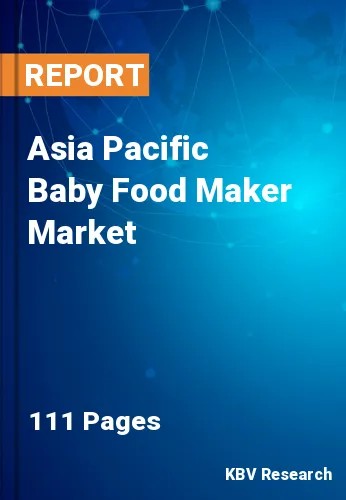The Asia Pacific Baby Food Maker Market would witness market growth of 11.7% CAGR during the forecast period (2024-2031). In the year 2022, the Asia Pacific market's volume surged to 1,129.3 Thousand Units, showcasing a growth of 16.2% (2020-2023).
Hypermarkets and supermarkets play a crucial role in the baby food maker market by providing consumers with a wide selection of food preparation and bottle preparation devices. These retail channels attract a diverse customer base, including parents looking for convenience and affordability. Shopping at hypermarkets allows parents to compare different brands and products in person, facilitating informed purchasing decisions. Thus, the Hypermarkets and supermarkets in China market consumed a volume of 141.73 Thousand Units in 2023.

The China market dominated the Asia Pacific Baby Food Maker Market by Country in 2023, and would continue to be a dominant market till 2031; thereby, achieving a market value of $179.3 million by 2031. The Japan market is registering a CAGR of 11% during (2024 - 2031). Additionally, The India market would showcase a CAGR of 12.6% during (2024 - 2031).
The proliferation of educational resources and online parenting communities has increased awareness about the benefits of homemade baby food. Access to recipes, preparation tips, and nutritional guidance has made it easier for parents to adopt them as part of their daily routine. Advancements in infant nutrition science have underscored the importance of providing balanced and varied diets during the early stages of life.
Paediatricians and child nutritionists often recommend homemade baby food to ensure optimal nutrition. This professional advice influences parents’ decisions to invest in them as they seek to follow best practices for their child’s health. Exposure to diverse culinary practices has encouraged parents to experiment with various ingredients and recipes for their babies.
As the population grows, so does the number of households with infants and young children, driving the demand for them. These appliances are becoming increasingly popular among Chinese parents, prioritizing health, convenience, and nutrition. They enable parents to prepare fresh, homemade baby food, aligning with the rising awareness and preference for healthy, organic options over commercial baby foods. The growing population in China is significantly impacting this market. With higher disposable income, Indian parents increasingly shift their purchasing behaviour towards premium and organic baby food products. There is a notable trend of parents seeking healthier, preservative-free options for their children, which aligns with a growing awareness of nutrition and health among Indian consumers. Thus, rising birth rates and increasing disposable income in the region drive the market's growth.
Free Valuable Insights: The Global Baby Food Maker Market is Predict to reach USD 2.2 Billion by 2031, at a CAGR of 11.1%
Based on Product, the market is segmented into Food Preparation, and Bottle Preparation. Based on Distribution Channel, the market is segmented into Hypermarkets & Supermarkets, Online, Specialty Stores, Convenience Stores, and Other Distribution Channels. Based on countries, the market is segmented into China, Japan, India, South Korea, Australia, Malaysia, and Rest of Asia Pacific.
By Product (Volume, Thousand Units, USD Billion, 2020-2031)
By Distribution Channel (Volume, Thousand Units, USD Billion, 2020-2031)
By Country (Volume, Thousand Units, USD Billion, 2020-2031)
Our team of dedicated experts can provide you with attractive expansion opportunities for your business.

